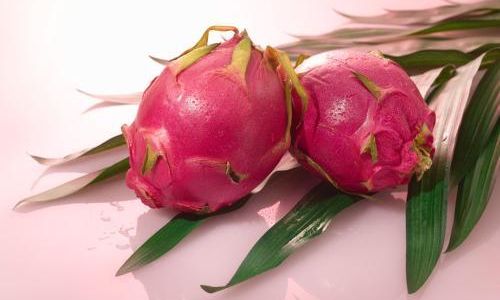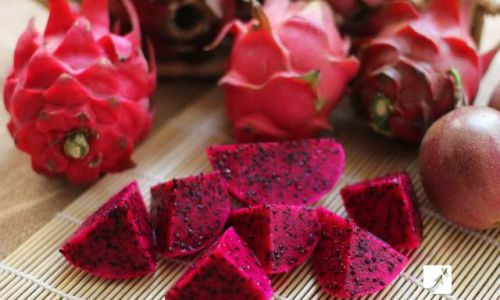Introduction
Dragon fruit, also known as pitaya or pitahaya, is a tropical fruit renowned for its vibrant appearance and unique taste. With its vibrant magenta or yellow skin adorned with green scales, and a delicate white or red flesh filled with tiny black seeds, dragon fruit stands out in the produce section. Its subtle sweetness and slightly acidic flavor make it a delightful addition to smoothies, desserts, and salads. However, like many tropical fruits, dragon fruit is highly perishable and requires proper storage to maintain its freshness and quality. In this comprehensive guide, we will explore various methods for preserving dragon fruit, ensuring you can enjoy its exquisite taste for as long as possible.
Understanding Dragon Fruit’s Shelf Life
Before diving into preservation techniques, it’s crucial to understand the natural shelf life of dragon fruit. Freshly picked dragon fruit can last up to two weeks if stored correctly. Once cut, its shelf life is significantly shortened, with the flesh typically remaining edible for one to two days in the refrigerator. Understanding these timelines helps in planning how to store and consume dragon fruit efficiently.
Selecting the Best Dragon Fruit for Preservation

The first step in preserving dragon fruit is selecting high-quality fruits. Here are some tips for choosing the best dragon fruit:
-
Appearance: Look for fruits with bright, evenly colored skin. Avoid those with bruises, soft spots, or wrinkled skin, as these are signs of over-ripeness or spoilage.
-
Firmness: Gently press the fruit. It should feel firm but yield slightly to pressure. Avoid fruits that are too hard or too soft, as they may be underripe or overripe.
-
Scale Condition: Examine the green scales covering the skin. They should be fresh and attached securely. Scales that are falling off indicate that the fruit is past its prime.
-
Smell: A ripe dragon fruit has a faint, sweet aroma. If it smells overly strong or has an off-putting odor, it may be overripe or spoiled.
By carefully selecting dragon fruit, you ensure that you start with the best possible product, enhancing your chances of successful preservation.
Storage Conditions for Fresh Dragon Fruit
Proper storage is key to extending the shelf life of dragon fruit. Here are some guidelines for storing whole and cut dragon fruit:
Whole Dragon Fruit
-
Temperature: Store whole dragon fruit at room temperature if you plan to consume it within a few days. For longer storage, refrigerate it in a crisper drawer set to a temperature of around 45°F (7°C).
-
Humidity: Dragon fruit prefers a slightly humid environment. If storing in the refrigerator, place it in a plastic bag with a few small holes to allow for some air circulation while retaining moisture.
-
Position: Store dragon fruit upright to prevent the scales from bruising or becoming compressed.
Cut Dragon Fruit
-
Wrapping: Once cut, cover the exposed flesh tightly with plastic wrap or place it in an airtight container. This minimizes exposure to oxygen, which accelerates spoilage.

-
Refrigeration: Store cut dragon fruit in the refrigerator immediately. It should be consumed within one to two days for optimal freshness.
Freezing Dragon Fruit
For long-term preservation, freezing dragon fruit is an excellent option. Here’s how to freeze dragon fruit effectively:
-
Preparation: Peel and slice the dragon fruit into desired portions. You can also puree it if preferred.
-
Freezing Methods:
- Individually Quick Frozen (IQF): Spread the slices or puree in a single layer on a baking sheet lined with parchment paper. Place the sheet in the freezer until the fruit is solid, then transfer the frozen pieces to an airtight container or freezer bag. This method prevents clumping.
- Direct Freezing: Place slices or puree directly into freezer bags or containers, leaving some headspace to allow for expansion during freezing.
-
Labeling and Storage: Label the container with the date and contents. Store in the freezer at 0°F (-18°C) for up to six months.
Thawing Frozen Dragon Fruit
When ready to use, thaw frozen dragon fruit in the refrigerator overnight for the best texture. Alternatively, you can thaw it on the countertop for about 30 minutes to an hour, but be aware that this may result in a softer texture. For immediate use, you can microwave small portions on a low setting for a few seconds, but be cautious of overcooking.
Using Frozen Dragon Fruit
Frozen dragon fruit can be incorporated into various recipes, including smoothies, sorbets, and baked goods. The frozen texture makes it ideal for blending, adding a creamy consistency to smoothies and a refreshing chill to desserts.
Drying Dragon Fruit
Dried dragon fruit is another way to preserve its deliciousness. Dried fruit retains much of its flavor and can be enjoyed as a snack or used in cooking. Here’s how to dry dragon fruit:
-
Preparation: Peel and slice the fruit into thin, even pieces. You can also puree it and spread it thinly on a drying tray.
-
Dehydration: Use a food dehydrator set to a temperature of around 135°F (57°C). Spread the slices or puree evenly on the trays and follow the manufacturer’s instructions for drying time, which can range from 8 to 24 hours depending on thickness and humidity.

-
Oven Drying: Alternatively, you can use your oven’s lowest setting (usually around 150°F or 65°C) with the door slightly ajar to allow moisture to escape. Place the slices on baking sheets lined with parchment paper and dry for several hours, flipping them occasionally.
-
Storing Dried Dragon Fruit: Once fully dried, store the fruit in an airtight container in a cool, dark place. Dried dragon fruit can last for several months if stored properly.
Dragon Fruit Preserves and Jams
Making preserves or jams is another creative way to preserve dragon fruit. This method captures its unique flavor and transforms it into a versatile ingredient for spreading on toast, baking, or using as a filling. Here’s a basic recipe for dragon fruit jam:
Ingredients:
- 4 cups peeled and chopped dragon fruit
- 1 cup sugar (adjust to taste)
- 2 tablespoons lemon juice
- A pinch of salt
Instructions:
-
Cooking: In a large saucepan, combine the dragon fruit, sugar, lemon juice, and salt. Cook over medium heat, stirring frequently, until the mixture reaches a gel-like consistency. This can take anywhere from 30 to 45 minutes.
-
Testing for Doneness: To test if the jam is done, spoon a small amount onto a cold plate and let it cool for a minute. Run your finger through the jam; if it wrinkles, it’s ready.
-
Jarring: Ladle the hot jam into clean, sterile jars, leaving a half-inch headspace. Wipe the jar rims clean, then apply lids and rings. Process the jars in a boiling water canner for 10 minutes to ensure they are sealed and safe for long-term storage.
-
Storage: Once cooled, store the sealed jars in a cool, dark place. Properly canned dragon fruit jam can last for up to a year.
Conclusion
Preserving dragon fruit is a rewarding endeavor that allows you to enjoy its exotic taste beyond its natural shelf life. Whether you choose to refrigerate, freeze, dry, or transform it into preserves, each method offers a unique way to capture and extend the fruit’s deliciousness. By following the guidelines and recipes outlined in this guide, you can ensure that your dragon fruit stays fresh, flavorful, and ready to be enjoyed whenever you desire. Happy preserving!






0 comments